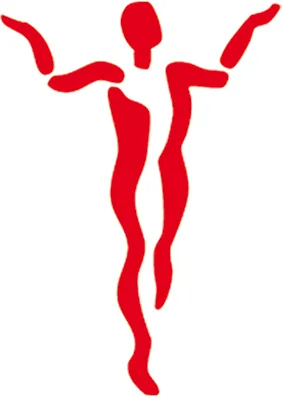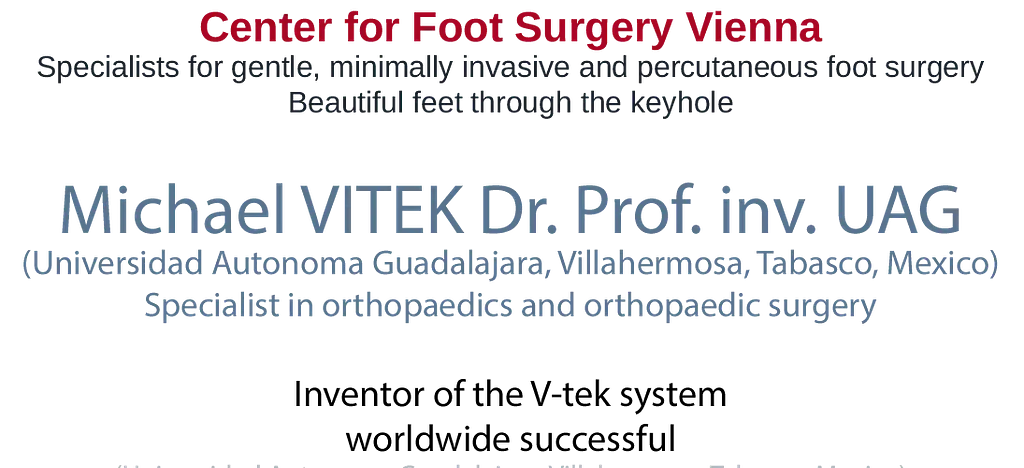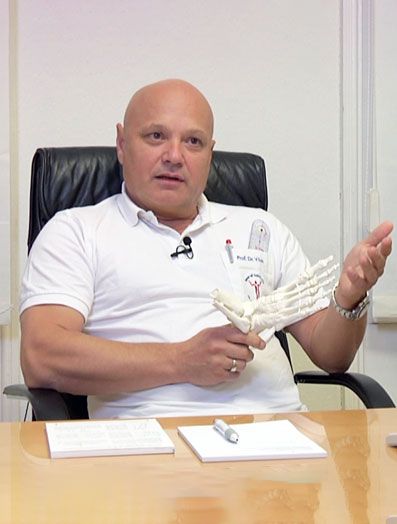calcaneus altus
Cacaneal tuberosity, haglund heel
The calcaneal tuberosity is an enlargement of the upper posterior calcaneal corner. Through shoe pressure, mechanical irritation can be caused to the surrounding soft parts such as bursae, Achilles tendon and sheaths.
Often this "ganglion" is only irrating and painful in tight shoes. Sometimes this irritation can also result in spontaneous tears of the Achilles tendon.
Treatment
Through conservative therapy (measures to reduce swelling, shoe modifications, physiotherapy and special insoles) improvement can sometimes be achieved. The problem is only really solved by surgically removing the tuberosity and removal of the most inflamed bursa and sheaths.
Surgical treatment of the high calcaneus, example 1:
Before: Massive swelling, shoe pressure complaints and inflammation. The passionate runner could no longer pursue her hobby because of too much pain.
After: Already one month after the minimally invasive operation through the keyhole, the inflammation has disappeared, shoe pressure and pain are gone. The two small punctures are now almost no longer visible.
Long-time-result: This is the final result 1 1/2 jears after surgery: no scars, no pain, full function, fully active in sports.
Surgical treatment of the high calcaneus, example 2:
Before: Preoperatively, an inflamed swelling can be seen at the typical site. This causes considerable pain, especially in tight shoes. Picture 3: The yellow file shows the high heel bone. In addition, the patient had a hump on the back of the foot (red arrow).
After: The high fesen bone has been straightened through the keyhole (percutaneously) and is now no longer disturbing (yellow arrow). The hump of the back of the foot was also removed in the same way (red arrow). The operation is minimally invasive, i.e. through several small punctures. Although other foot problems were operated on in the same session, the patient is immediately able to walk normally.
In the post-operative X-ray, it can be seen that very little bone was removed. Only the part of the bone that had pressed inside the shoe was removed very sparingly and selectively. Postoperatively almost no pain. This and the immediate mobilization with full load are the big differences to the open method.
Post treatment
Full weight bearing from the fourth postoperative day, hospitalization few days.
Work ability
Operation on only one side office work can be resumed after approximately ten days, operation on both sides and heavy physical labour, after roughly 2 months.
Sports activities
After approximately four weeks for less strenuous sports, after operation on both sides after approximately twoto four months for squash and tennis.
Results
Good results are achieved in almost 95 percent of cases.
Complications
Infection in about 2 percent of cases, where however, the end result itself rarely affected by it.
Example:
Left & Middle: The arrow indicates the calcaneal tuberosity.
Right: The chiselled off surface must be smooth (red arrows). Particularly important is the "complaint corner" on the Achilles tendon insertion (yellow arrow), if the bone remains here, then a relapse is inevitable (recurrence of the same symptoms).



